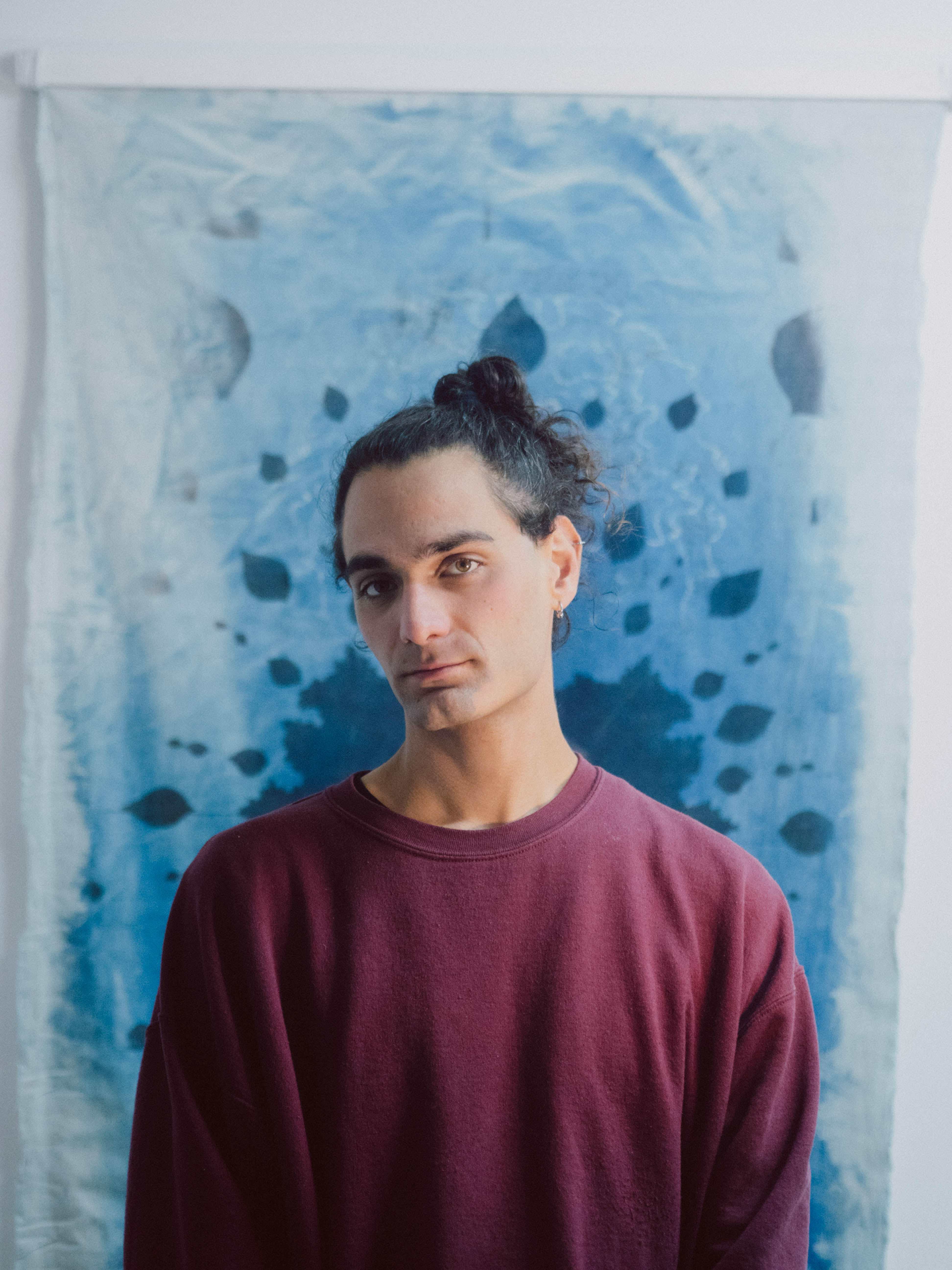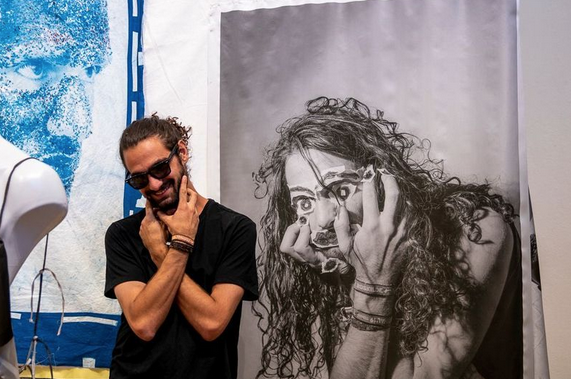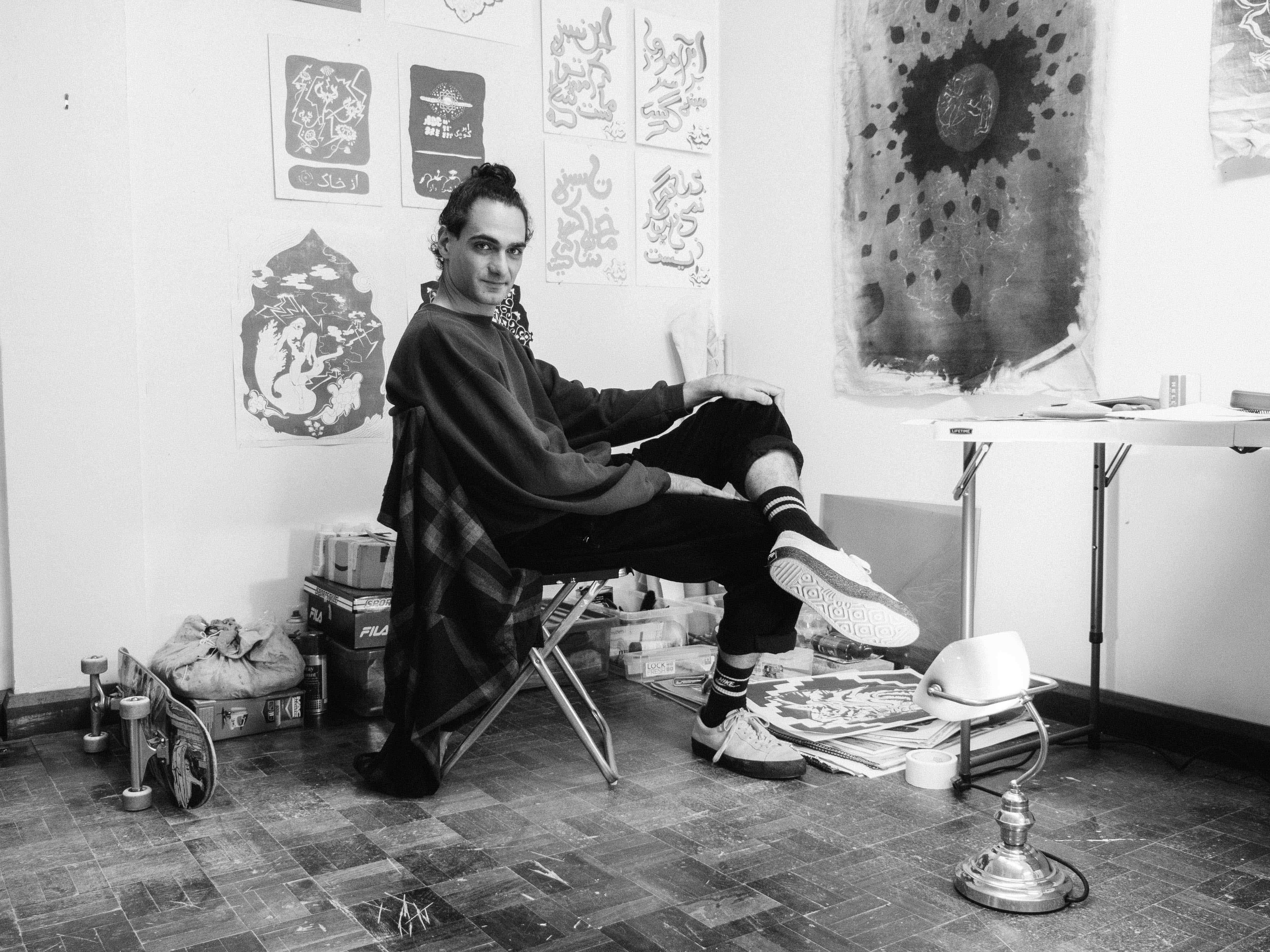Get to Know David Younglove '19
The multi-disciplinary artist and recent grad is building a career in Belfast.
Jasper Lipscomb | College of Arts & Media Aug 22, 2024
Growing up in Boulder left multi-disciplinary visual artist, David Younglove, with a yearning for city living. Although he began his studies in engineering physics, the lifelong artist was drawn to the visual arts curriculum at the College of Arts & Media. He first began to feel like an artist in high school, where he’d pull paper from library printers to hone his craft during class. When teachers weren’t irritated by his inattention, his abilities impressed them and his classmates equally.
Coming to CU Denver as an art practices student allowed David to enroll in painting and drawing courses to hone his craft and art history courses that expanded his understanding of the art world. As a student employee in the Emmanuel Art Gallery, he assisted in the production of “31 Days” with world renowned artist, Oliver Herring. David was also teaching assistant at LYNX Camp, a summer program for high school students interested in the arts.
As his studies ended, he received support in finding opportunities and setting up his next steps, which helped him meet or exceed his expectations as an undergraduate. David continues his work in Belfast, Ireland through exhibitions, commissions, and recently coding for user interfaces.
1. When it comes to design and the value of artwork, what are some of the main differences you see between Western and more international sensibilities?
When it comes to design, there are many differences. I believe one is the way the western world sees reason and rationality as the best method of understanding the world. If you look at a Raphael painting, for example, you see idealized forms of humanity interacting with mathematically defined spaces. Eastern cultures each either have a unique concept as the best or do away with a hierarchy of understanding entirely. Something like a traditional Tibetan Thangka painting, on the other hand, shows fiery deities screaming fiercely across fluid and vibrantly pigmented landscapes. There are many exceptions to this, but I think it helps to understand where these differences come from.
In terms of value, a key difference in my opinion comes from the contrast between western individualism and eastern collectivism. We attribute the value of a work in the west to the greatness of an individual artist that is said to have single-handedly altered the course of art history. In the east, this concept is attributed more to the work of many in schools, regions, or traditions. Again, there are exceptions to this.
2. Despite increasing awareness of creativity through video game development, not everyone associates coding and the arts with one another. What would you say is a through line you see between art and computer science?
Video games are a great example of how easy it is for the technical art of coding to bleed into narrative arts and storytelling. Owing to middle eastern heritage, I come from a background where math and sciences are already considered art, just in a different medium. Arguably, the first computers were a type of sewing machine that accepted punch cards to reproduce patterns. Many people get into coding with the hopes of a lucrative career, but a lot of them are realizing that it can be a form of expression as well.

David Younglove poses with an image of himself that appeared in
Oliver Herring's 31 Days at the Emmanuel Art Gallery.
3. The reverence of album artwork has been making a comeback with the resurgence of vinyl records. When designing a piece of album art, where do you start?
Album artworks are a lovely commission because it's almost like a collaboration with another artist. I think the goal of an album cover is to clue the audience in to what it sounds like, without giving too much away or being too literal. The easiest way to start is compositionally. The meter of the music will inform whether the composition should be busy with lots going on or open with lots of space. From there I can decide what elements need to fill that composition based on the tone and content of the songs.
4. Did working with younger students to develop their drawing skills during LYNX camp provide insight into your own craft or learning process?
Absolutely! Watching students develop reminded me of my own pitfalls and bad habits to avoid when drawing. The approaches I saw reminded me of how many different processes people can have and showed me ways outside of my established comfort zone. It reminded me of when I was first starting, as students were eager to try anything and discard what wasn’t working. I was incredibly encouraged by how supportive this group of young people were and how positively they were getting on with each other. I was proud to be someone they looked up to.

5. What is something about writing grants that you think all creatives should know?
It makes it so much easier for them to give you the grant if you have a detailed budget. They will ask things like, ''why is this piece of equipment being purchased instead of rented or borrowed?'' or ''why go for the more expensive brand of these materials?'' If you have good answers to these things, they will have fewer issues with approving your request. You will also stand out from the many applications that lack this level of detail.